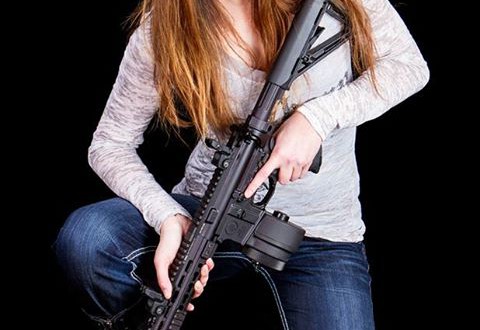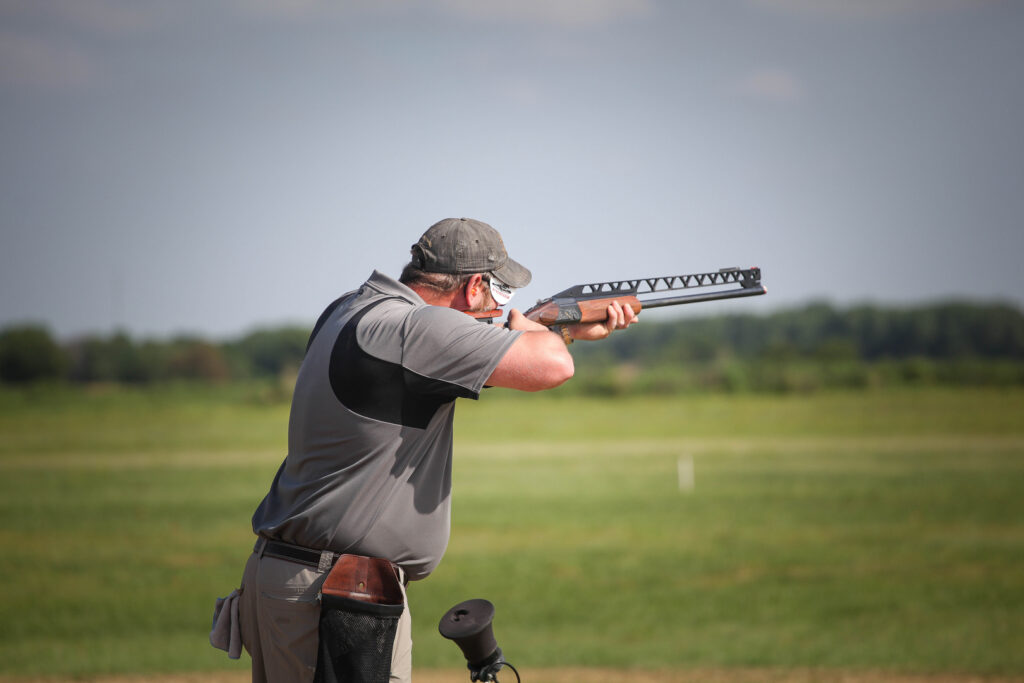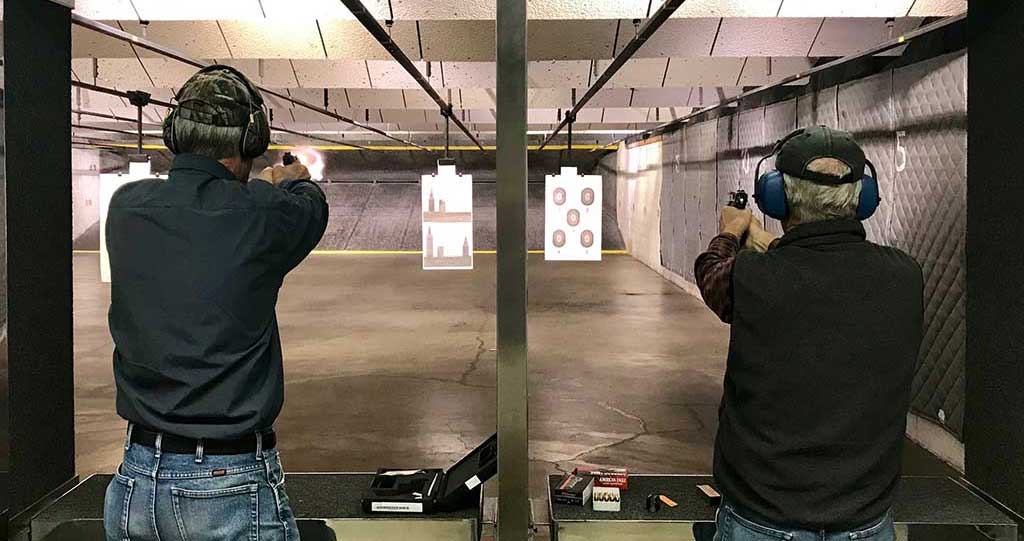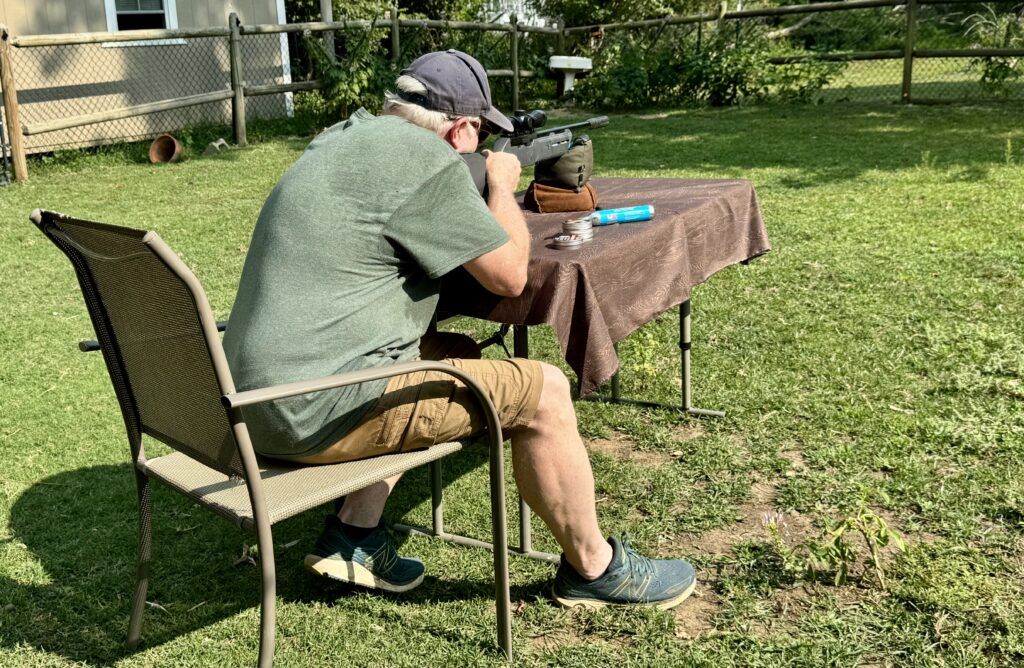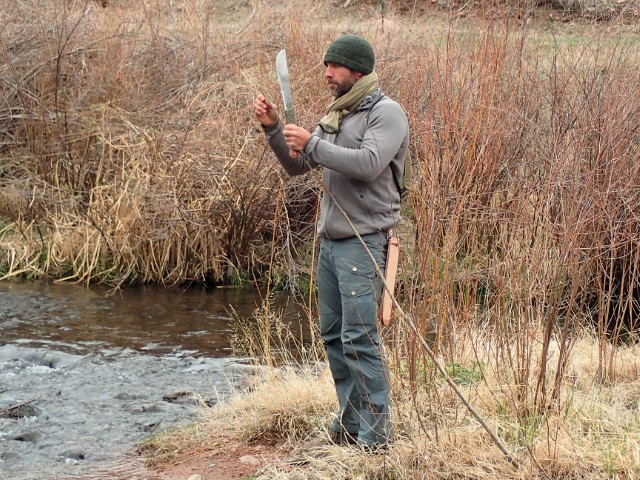Keith Finch joins us again with a follow up to his previous article (here). This is a great read and we are glad to have Keith sharing this with us.
My last appearance here dealt with keeping ourselves safe without our firearms around. Here we are tackling the reverse of that circumstance. We are discussing ‘Castle Doctrine’ defense set-up and some appreciable tools you can add to the mix to get your personal set-up ‘just so’ for your home or business. This is a longer article that has been some time in the making so thanks for joining me in advance and take a break if you need to.
First let’s delve into the ‘Castle Doctrine’ of Michigan specifically, other states have similar laws but I can only accurately comment on Michigan. The law we are most closely referencing here is the Self Defense Act (Act 309 of 2006) which states a person may use lethal force with no duty to retreat (also covering ‘Stand Your Ground’) so long as they meet 4 criteria.
Advertisement — Continue Reading Below
- You have a legal right to be where you are. (Since the rest of this article will deal with your home/business defense, you own it, which is about a ‘legal right to be’ as you can get)
- You are not committing a crime (Can’t be cooking the Meth or the like. I’m from Allegan County, MI)
- You honestly and reasonably believe deadly force is necessary. (If you shot someone threatening you with ‘mind bullets’ I have a nice padded white room for you. Also good luck at trial)
- The force was used to prevent imminent death, great bodily harm, or sexual assault to yourself or another person. (No corny explanation here. If the danger feels real, react!)
The law also provides four general scenarios with specific exceptions. In these four scenarios the law defaults to agreeing with you that you were in mortal danger if you believed, reasonably, that you were.
- Someone is breaking and entering a dwelling or business
- Someone is committing a home invasion
- Someone has committed one of the above two actions and is still there
- Someone is attempting to unlawfully remove you or another from a vehicle, dwelling, or business against their will.
PLEASE NOTE: This is a generalization of the law to establish context, not the law verbatim and should not be taken to be legal advice in any manner.
The exceptions to the four scenarios include things like police officers with warrants or the person entering is a resident or owner. The purpose for the Self Defense Act is to outline a framework for liability and criminal immunity in lethal force situations. As the Act stands it provides firm legal standing for self-protection at our homes and businesses and removes a great deal of possible liability from us should someone pursue a civil suit against us, this allows us to remove that hesitation and more effectively save our lives and those we care for in case of an assault.
Now that we have the legal precedent covered, and that precedent is similar (but not identical) throughout many states, let’s build our plan!
Our homes and businesses are static locations. This offers us significant advantages when emergency planning is taking place because, in general, things don’t move. Our doorways don’t spontaneously move about the property, furniture stays where we put it, lighting is how we set it up, and phones are wherever we want. We use all these fixtures to stage our defensive plans. We build off them and place them as we see fit to work both in an emergency and be convenient in our daily lives.
We build our castles.
Advertisement — Continue Reading Below
Picking our defense tools:
Since this is a shooting blog the most obvious tool we likely have or want to integrate into our home or business defense is a firearm. The questions now are which ones and how many? (Side note: If you want a serious look at the ‘How Many?’ question I suggest you look up the Justice Files video on Lance Thomas, it’s over 20 years old but very relevant to this topic)
A great deal of time has been spent in front of the camera, on the range, and in the think tanks of our defensive strategy communities and a treasure trove of good information is available. There is also plenty of junk science out there too, be sure of where the information is coming from and how it was gathered when choosing ‘a good gun’.
There are a number of questions we must answer when choosing and placing firearms. Who is using them? Where are we using them? How do we get to them? What are the hazards to avoid and mitigate? Which firearms make the most sense?
Two trends begin to emerge in this search. Modern tactical long guns (rifles and shotguns) are the best defensive tools. Modern concealment style handguns are the most convenient defensive tools. Now we need to balance the convenience factor with the effectiveness factor to reach a formula you are satisfied with for your defense plan. If it’s feasible, the best plans will include both handguns and long guns.
We use a handgun to fight to our rifle
The handgun is easy to integrate if we already conceal carry, it isn’t necessary that we find a bigger gun than the one we already find convenient enough to keep on our person. However since we have all kinds of additional places we can place a handgun at home, we can stage a larger model if we so choose.
In my own set up, my carry gun is (currently) an M&P Shield in 9mm. My ‘nightstand gun’, as they’re commonly referred to, is a Glock 21 SF. I’ve carried the 21 concealed, it’s very doable, but the Shield is almost effortless and thus rides with me the most. Since the shield is beside me the most, it is my most relied on defensive firearm. Your carry gun, if you carry, is your most relied on defensive firearm.
Advertisement — Continue Reading Below

We have our baseline now. The gun we find convenient enough to pack around with us is the starter gun to our defense plan. We don’t need to take this gun off our bodies, which is by far the most convenient place to have it in an emergency. These guns have limitations though for the sake of comfort and concealment, smaller grip, lower round counts, more rudimentary and shorter sights, higher shooter felt recoil…
Our concealment firearms are more difficult to use than many of the larger frame guns, even larger frame guns in higher calibers. A mitigating factor against this difficulty is that, if we are training properly, our concealment gun is the one we are most proficient with. There are trade-offs if your carry gun is also your only defense gun. But ultimately…
It’s a good tool for the job…
It’s a convenient tool for the job…
The question now, are you satisfied with that set up?
No? Do we want to add another tool?
Next gun
The ‘Night Stand’ gun is probably the most common home/business defender. A far greater portion of our shooting community has this type of gun. Many have one in addition to a concealed carry gun. Being that most handguns are purchased for protection but that CCW permit holders are still a minority segment of the gun owning population it is a safe bet most of the handguns sold fall into this general category.
These guns tend to be larger ‘Duty Sized’ guns. They are easier to shoot over all. They tend to have better sights. They have higher capacity magazines so you have more protection ready ammo. They have lower felt recoil because they are heavier guns. There are distinct advantages to having these types of handguns in hand in a violent encounter, over a smaller firearm. But remember, any gun is better than nothing in a fight.

I’ll use my set up to illustrate. My concealed carry gun is the M&P Shield in 9mm. I carry it with 8 rounds of +P defensive ammo. It’s a great base but it has its limits (namely 8 rounds). My ‘Night Stand’ handgun is the GLOCK 21 SF, 13 shots of +P .45 ACP. It has more rounds, larger and heavier rounds, better sights, and is easier to shoot despite the larger round because it is a larger gun. Alternately I can have an M&P9L set up with 18 shots of 9mm +P that can more than double the capacity of my Shield. It’s also easy to set extra magazines nearby, giving you around 50 rounds of ammo to grab fairly conveniently from a prepared location
Speaking of that location… Lockbox or safe on the dresser, holster on our desk, staged in a drawer, or even just placed on a counter, there are a myriad of ways we can set these guns up and integrate them into our emergency plan. But as with every plan we have questions we MUST answer when we set our tools in place.
First, can I get to the gun?
Advertisement — Continue Reading Below
This is a vitally important question. How accessible is our gun? How accessible is it really?
Where do you spend most of your time at home or in the office? Is the gun in that room? If not, you aren’t as close to your gun as you may think. Do this for me and time yourself. Walk from your living room, den, or kitchen, to your gun. Then access your gun through the combination lock or key lock or however it is stored.
Honestly, how long did it take?
My guess, 1-2 minutes. Not bad. But a quick search of YouTube shows us plenty of breaking and entering’s… and they happen in seconds. 10 seconds is actually on the lengthy side for someone kicking in your door or busting a window and accessing the interior of your home or business.
10 or fewer seconds is our reality. Can you get your gun? If we can’t be ready in that time frame, at a brisk walking pace, we need to rethink and improve our accessibility plan.
Secondly, who has access to the gun?
One of the greatest things about carrying your protection gun is that you are in control of it (It’s also less than 10 seconds away). With a static location ‘Night Stand’ gun, you aren’t. Plain and simple you are not in control of a gun that isn’t in your possession so we need to establish who has access to that gun in its static location. Combination and biometric safes are pretty standard fare when it comes to controlling access to many items, including firearms, and these are excellent control measures to determine who in the household or business can grab that gun. You should have confidence that the people with access to the gun can use it effectively and competently. A safe and professional level defensive handgun course, even a basic one not necessarily geared for a concealed carry permit, can establish that competency.
Advertisement — Continue Reading Below
The staged static location handgun is a very effective plan when done properly. By establishing access and maintaining the assurance that whoever can get to that gun can use it and do so in a timely manner we are adding a very effective response to violence against our homes and workplaces that can save the lives we care most about.
It is a good tool for the job…
It is fairly convenient, considering this is how most handguns are employed…
Are we satisfied with this level of preparation?
No? Do we want an additional tool?
Next gun
Now we’re talking about employing a long gun. A modern defensive rifle or shotgun has distinct advantages over a handgun, but in short you’re bringing a much bigger stick to this sudden fight for your life. In addition we are going to stage a long gun at a static location, much like a fire extinguisher, where as we could fairly easily carry a duty size gun while at our business or home.
It’s this plan of action where we use a handgun to fight to our rifle. And to be clear I am referencing AR15 and AK style firearms (and all the other nifty shiny ‘modern sporting rifles’). A lever action or bolt action rifle will almost certainly suffer from severe ammunition limitation, even if you can effectively work the action. A reliable semi-auto is mechanically much faster than we can ever be.
A long gun that we can use proficiently is our most effective tool in a fight… period. We have the most ammo (in the case of a rifle) and are delivering much greater energy on target per shot. With the same amount of training, preparation, and continuing remediation, the proper long guns are easier to aim and use than handguns (shoulder stocks are wonderful things).
Advertisement — Continue Reading Below
Looking at shotguns for defense we see 5-8 rounds of high energy shot. Using good defense ammo, like #4 buckshot, we’re going to get very effective accuracy at wall to wall distances. Using a pump action can also be very economical, starting as low as half the cost of modern tactical sporting rifles. Birdshot is also a cheap way to practice pulling the trigger to continue the economic pluses. Semi-auto shotguns are also available readily and few will truly break the bank when you shop around and plan the purchase.
Hooray! Economically practical defense!
Now the down sides. The two biggest detractors of using a shotgun defensively are ammunition capacity and recoil. There is no denying shotguns kick, even 20 gauge which I tend to recommend over 12’s for most shooters, have stout recoil. I’m not saying it’s unmanageable, but it will throw your sights off target and can slow or foul follow up shots (always plan for an additional shot, never assume a threat is over). Taking these things into account in addition to the considerations outlined above for static location defensive guns, does a shotgun make sense?
Next… Rifles

Ballistics wise, our caliber of choice is 5.56x45mm/.223 Remington (Yes the picture above is a .308, shhhhhh!). Using lead core ammo (M193 and clones) and steering clear of M855 (mild steel core) we actually find that its safety inside buildings exceeds most other ammo types, even buckshot and handgun rounds, when it comes to over penetration (going through walls). Something about the zippy little round’s design loves to dump its tremendous potential energy very quickly when it strikes a barrier. SWAT teams and patrol officers are increasingly going with AR15s and other 5.56 chambered rifles for this reason among many. Those additional advantages include very mild recoil, 30 round standard capacity (even 40 easily), easy to add optics and lights for faster time on targets, and very accurate.
Advertisement — Continue Reading Below
Add to this equation modern defense rounds for rifles (in any moderate caliber) and the energy delivered to threats (stopping power) goes further up while collateral concerns (oops! I missed!) further decrease with even better results on low over penetration.
This all adds up to one conclusion.
Modern Tactical Rifles are awesome for protection and defense!
But are they convenient enough for you to put in place? Staging a rifle or a shotgun takes planning and effort on both the location and storage fronts. Wall racks or cases or whatever else you may come up with will take some serious thought. We still need to consider our accessibility levels as well, who can get to it and how long does that take? The good news here is that, quite likely, we or someone else with us have a gun in hand already since we planned well and got a gun before we went for the gun. I’m making the assumption that we staged a handgun as a step prior to the long gun.
More questions now. Do we stage the gun loaded (round chambered) or “cruiser ready” (magazine full but chamber empty)? We must practice accessing the gun properly for the way it’s staged? This covers the gambit from chambering a round when appropriate to activating optics and even as simple as flipping the safety off. We must walk ourselves through this plan, physically, to maintain our proficiency with it. I cannot emphasize enough how serious you must take your walk through practices and your firearm proficiency, be the professional!
Advertisement — Continue Reading Below
Tangent time! Anyone who has been through a class of mine can tell you I love tangents, random ones at times, but this one is relevant I assure you.
If you do not take your role seriously and those around you don’t take their roles seriously in an emergency… you… will… fail! I’ve been a part of an enacted plan that broke down, and the reason it broke down is one of my colleagues didn’t take his role seriously, he never had. This was not a violent encounter (lucky for us), it was a medical emergency (not lucky for the patient).
I responded beside our EMT to a cardiac arrest victim inside our building, we have a plan in place for this situation. It’s a simple plan, two really important steps, call EMS and get the AED on the victim’s chest. Well we got the AED into action since we had control of that aspect and had additional staff helping control the scene’s safety so we could work. What I didn’t have control over was the man I had at our central radio dispatch, and how despite holding that post he had never seriously considered that sitting in that chair meant he was our callout to emergency services. This man asked me over the radio what the number to 911 was. I get it, it was an emergency and stress kicks in. The problem is we know that’s going to happen ahead of time, we know it’s going to be stressful. We train! We’re professionals! He had one job and he failed because he did not take his role seriously. In this case we didn’t lose that patients life, I couldn’t say if it would have worked as well next time. He won’t know either, he no longer works with us.
Ok, tangent over. I can’t ever overemphasize preparation in basic responses. The best and most expensive tools in the world are useless in the hands of people not ready to use them and even the most basic tool is useful in the hands of a willfully prepared individual.
And speaking of basic tools…
Communication

Our external and internal communication (calling emergency help and talking with the people in the house or business with you) is just as important to our safety as getting to our guns.
Having a plan to get the police heading our way and making sure those people in our care get where they need to be so we can protect them requires as much prior thought as training to use a firearm. This is why we do fire drills in school, prior safety planning. Establishing and practicing the emergency plan routinely (monthly, quarterly, but repetitive enough to establish the needed result) lets our families and co-workers know what their roles are in case of a break in. The reason this must be physically practiced is so we physically know, as well as theoretically, where we are supposed to be and where others are supposed to be.
Practicing in this manner is not the easiest or most convenient thing, you might only be able to discuss the plan instead of physically walk through it. This is still a useful step in communicating exactly what is expected from each us in that emergency.
One of those steps discussed internally is starting the external communication. Who is calling 911? You, the kids, our co-workers, who is on the phone? Where is that phone and is it protected behind the armed defender? Do you have a prepared message that can be read by the caller, something on a notecard? Does it have your location, what’s happening, who is with you, and what services you need on it? Believe it or not having a written “cheat sheet” is an exceptional and simple tool to help our brains respond in the right way during an emergency, this same stress direction assistance is why we now build AEDs that literally talk to us. It’s not so people who have no clue what to do will somehow magically be able to, it’s so the people who do have the preparation have some streamlined reinforcement to perform their roles.
After all we have discussed here we now have our basic outline to fill in. The details are going to be unique to our situations but the pattern of those details will all be the same. Getting everyone to an established safe place, securing it, and getting help on the way.
The key isn’t the guns, it is the preparation.
